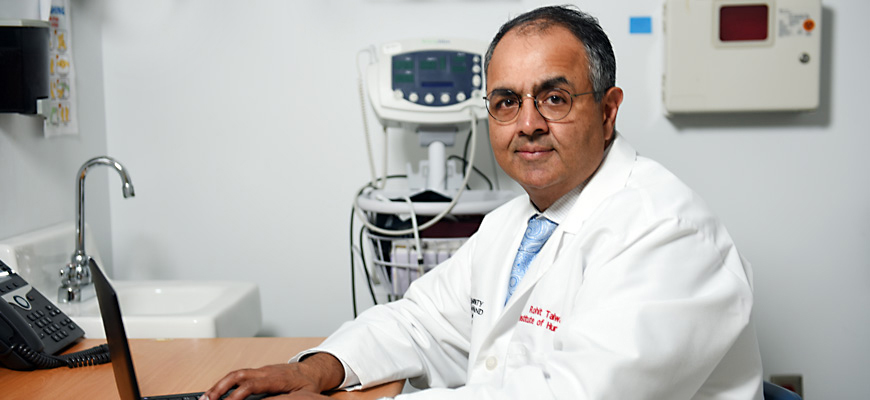
Hindsight 2020: The physician
Gamecocks reflect on how COVID-19 changed their jobs and how they work
Posted on: August 3, 2021; Updated on: August 3, 2021
By Chris Horn, chorn@sc.edu, 803-777-3687
This summer, Carolinian magazine reached out to a cross-section of alumni, faculty, staff and students to ask how the COVID-19 pandemic has changed their work, and their workplace philosophies. Treating infections is a normal day at the office for Rohit Talwani, a Baltimore-based physician and associate professor of infectious diseases at the Institute of Human Virology, University of Maryland School of Medicine. “A lot of what we do is tied to teaching infectious disease fellows — physicians in training who are specializing in this field,” says Talwani. “But everything got upended with COVID because we had the responsibility of managing COVID patients and helping the hospitals devise policy guidelines for minimizing the spread of the virus.”
Teaching didn’t stop because of the pandemic. But literally overnight everything had to shift to virtual in terms of education. Even a lot of our patient care, particularly follow-up care, moved to telephone visits, and all of this was kind of humming in the background while we were faced with the crush of managing very sick COVID patients in the hospital.
We conducted several clinical trials related to COVID, which, before the pandemic, typically took several weeks to months to get started as we waited for approval of contracts and research committees. We were very lucky that our administrative bodies at the university and hospital moved quickly to get these studies approved because there just weren’t any known treatments.
We had to follow good clinical practice and continue careful assessments of risks and benefits as we did trials with all emerging therapies including plasma, antibodies, immune treatments and antivirals, but with people dying every day there was a pivot toward adding more resources in order to quickly review protocols.
Virtual care has turned out to be a great advantage, particularly for patients who live a long way away or just don’t like coming to the hospital. Sometimes a telephone visit is sufficient, especially if you live on the eastern shore of Maryland.
We also did the Janssen vaccine study and had to move very quickly to recruit patients and set up a section of the hospital where we’d be seeing patients. We came together really fast, working under what’s called an incident command structure with facilities, planners, maintenance, information technology, communications, etc. Maybe this is common sense to people who do business administration all the time, but it was good for me to learn the key players when you need to get things done.
We're going to have to be more streamlined. As health care institutions get bigger and you have all these large conglomerates, you have to be nimble with your decision making. If there's a flu pandemic in the future, we'll have to move even faster than we did with COVID — that could be a lot worse.
Share this Story! Let friends in your social network know what you are reading about